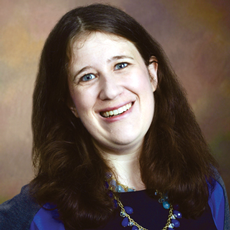
Even as we support those brave healthcare providers who kept residents and patients safe during the California wildfire that killed dozens, we can’t lose sight for one second those who survive. They will carry lingering scars.
The concept of “trauma-informed care” hit me when I read a comment by registered nurse Allyn Pierce in the New York Times. Negotiating around and through the fire, Pierce made it to the Adventist Health Feather River, where he manages the intensive care unit, and began treating the injured. (Side note: Pierce is one of the heroes who destroyed his truck getting people to safety. Luckily, Toyota has pledged to give him a new one.)
While Pierce and his coworkers survived, they commented on how traumatic the experience had been.
“When I close my eyes at night, I see fire,” he told the Times.
It’s a good reminder about how we never know what our coworkers or residents have experienced, and how it informs their behavior today.
The Centers for Medicare & Medicaid Services is requiring the implementation of trauma-informed care by November 2019 under Phase 3 regulations. Providers are likely to see it as “one more thing” and do the minimum. But as Jill A. Schumann, president and CEO
LeadingAge Maryland, explained during a session at last month’s annual convention, it is “worth the investment of time to implement a more pervasive, organization-wide approach.”
What that means is not only helping residents receive the mental health services they need but creating an environment that’s safe for staff and residents when it comes to trauma-related issues. Schumann is quick to point out that nursing homes aren’t counseling centers, and a provider doesn’t have to dig out the root cause in order to help a resident feel safe.
For example, one resident kept putting her falls mat on the window.
“She was afraid of something coming through the window,” Schumann said. It turned out the resident had been raped by an assailant who came through the window. In another case, a staff member alerted an administrator to a nurse weeping in a locked closet. A resident had touched her inappropriately, triggering a traumatic memory.
In both cases the provider isn’t charged with becoming a psychologist, but rather with making residents and staff members feel safe. This can be especially difficult when residents have cognitive impairment. Schumann shared how one resident had become very agitated between 10:30 p.m. and 11 p.m. Staff who sat with him realized that he was near the parking lot and kept seeing headlights flashing — it was shift change, and the flashing lights caused him to remember past trauma.
“Room-darkening shades solved the problem,” Schumann said. “They came to realize that he was a veteran and was being triggered by earlier experiences, but were able to create a solution even without knowledge of the specific trauma.”
Among the steps needed for providers who want to reach this goal are ensuring a senior leadership commitment, empowering a task force at a facility, launching initial training, conducting an organizational assessment, involving residents and families and providing ongoing training.
What I worry most about as providers embark on this goal is a dismissal of the idea that trauma can last and pop up in strange ways, years after the fact. It’s easy for some of us to say, “Well, this happened to me, and I’m fine,” or “Our staff are tough; they don’t need us to interfere in their lives.”
But as speaker Lisa Schiller, of MHY Family Services of Mars, PA, said during the LeadingAge session, while “prior adversity is not destiny,” none of us can control how it will change our lives.
“The impact of adversity is not a choice,” she said. “Understanding adversity helps us make sense of behavior.”
After all, both staff and residents are part of a community. We can recognize that small gestures — pulling down the blinds for a resident, stopping to speak in a measured tone to a coworker or understanding that a coworker may panic at the sound of a fire alarm — can have a larger impact.
“When we kind of change the culture so people can help each other, then we have a more open and transparent environment,” Schumann said.
Follow Senior Editor Elizabeth Newman @TigerELN.




